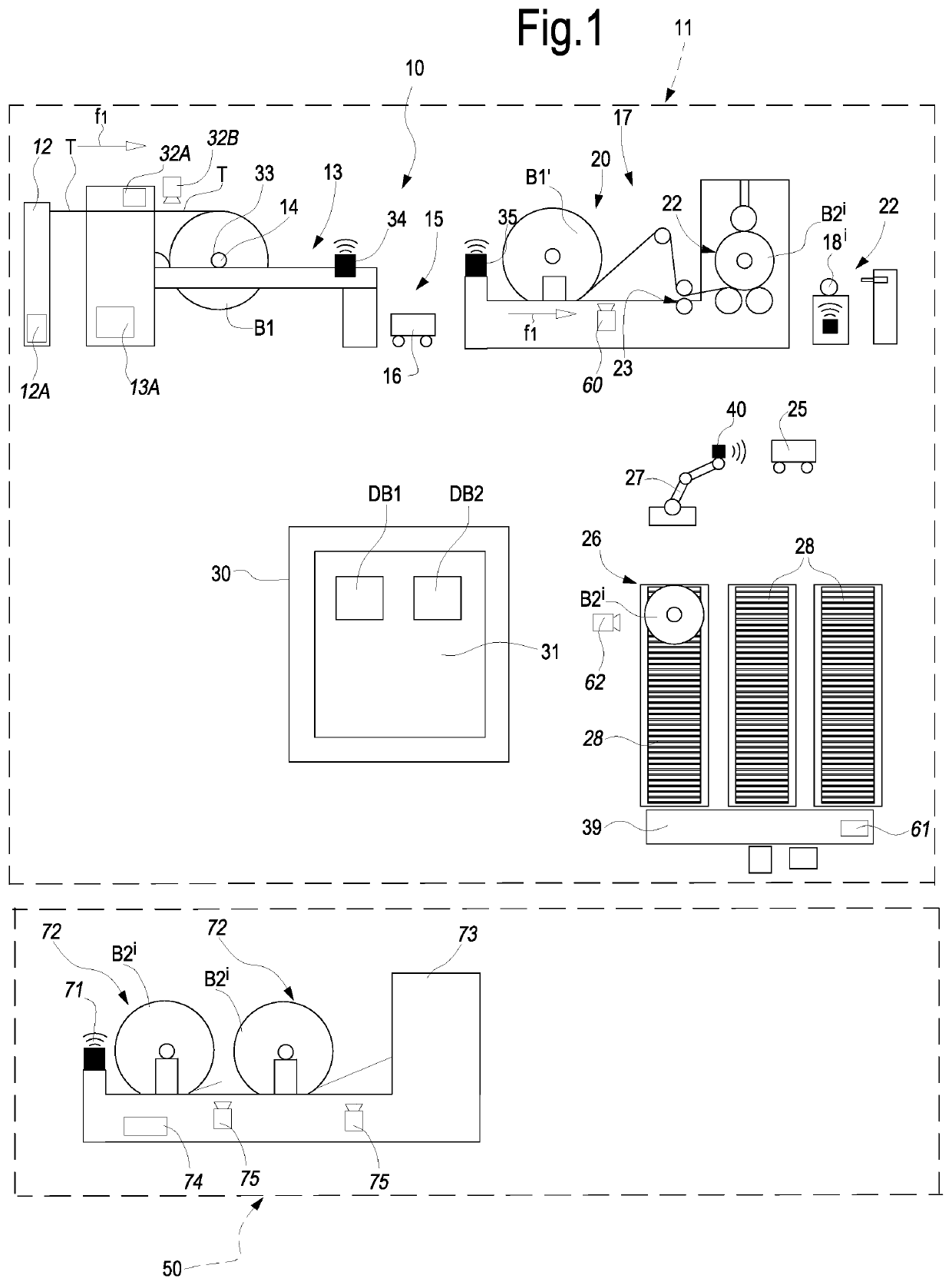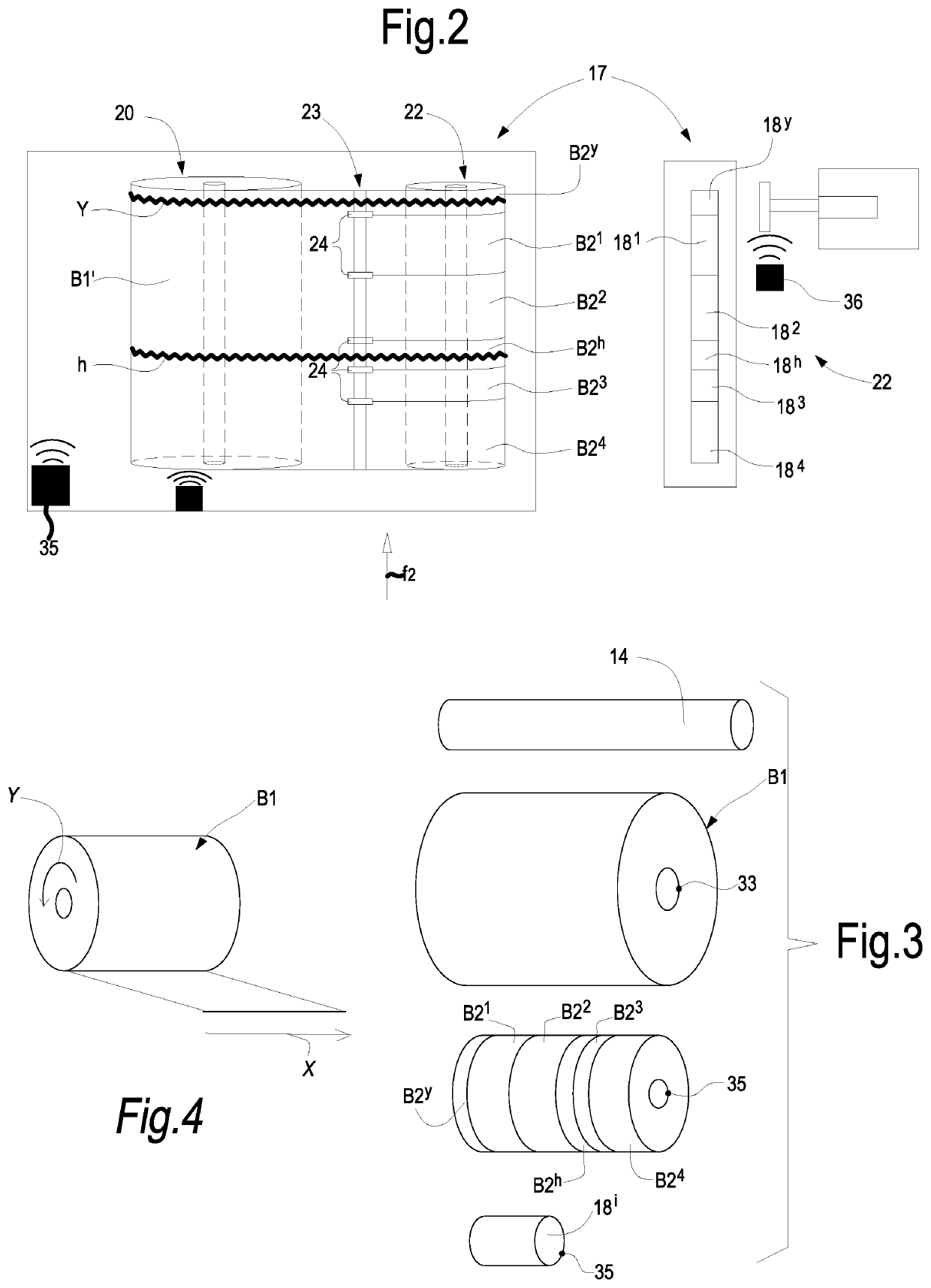Method for predicting the presence of product defects during an intermediate processing step of a thin product wound in a roll
a technology of product defects and intermediate processing steps, which is applied in the field of predicting the presence of product defects during an intermediate processing step of a thin product wound in a roll, can solve the problems of inability to validate the quality of the finished product or create production problems, the production process must be significantly slowed down or even halted to eliminate the defect, and the defect cannot be eliminated. , to achieve the effect of greater prediction
- Summary
- Abstract
- Description
- Claims
- Application Information
AI Technical Summary
Benefits of technology
Problems solved by technology
Method used
Image
Examples
example 1
[0393]Assume to have a process in which products wrapped in tissue paper are created and composed of the primary step (in-line production and winding on a primary roll), packaging and conversion. The rewinding step in the example in question is not present and the conversion operates directly with single-ply rolls of primary type (Master Rolls).
[0394]During the production step it is necessary to guarantee a product that limits processing problems in the conversion step.
[0395]The process allows some of the parameters indicated above to be collected, and in particular in the primary step at least the following measurements:[0396]roll identifier (this is the identification code of the primary roll);[0397]product type identification (code that identifies the product type; the grading depends on the type of product / process / producer / customer);[0398]machine type (code that represents the winding machine);[0399]roll length;[0400]format width;[0401]external diameter;[0402]basis weight;[0403]...
example 2
[0449]Let us consider a process for nonwoven products in the conversion step of which several plies of nonwoven of the same nominal width are joined and bonded.
[0450]The process consists of the primary step (nonwoven production, winding in primary roll), rewinding, packaging and conversion step.
[0451]During the unwinding and processing step in the final conversion machine the nonwoven product can be subject to variations in width with respect to the original width of the product due to the different unwinding tension. It is observed that in some cases the extent of narrowing varies between the plies to be joined resulting in a final product that does not conform or is in any case of lower quality. The interactions and influences of the production and winding factors of the product that cause different narrowing between the plies must be identified.
[0452]With regard to the product and process parameters to be considered, these are at least all those indicated previously for the prima...
PUM
| Property | Measurement | Unit |
|---|---|---|
| Area | aaaaa | aaaaa |
Abstract
Description
Claims
Application Information
 Login to View More
Login to View More - R&D
- Intellectual Property
- Life Sciences
- Materials
- Tech Scout
- Unparalleled Data Quality
- Higher Quality Content
- 60% Fewer Hallucinations
Browse by: Latest US Patents, China's latest patents, Technical Efficacy Thesaurus, Application Domain, Technology Topic, Popular Technical Reports.
© 2025 PatSnap. All rights reserved.Legal|Privacy policy|Modern Slavery Act Transparency Statement|Sitemap|About US| Contact US: help@patsnap.com


